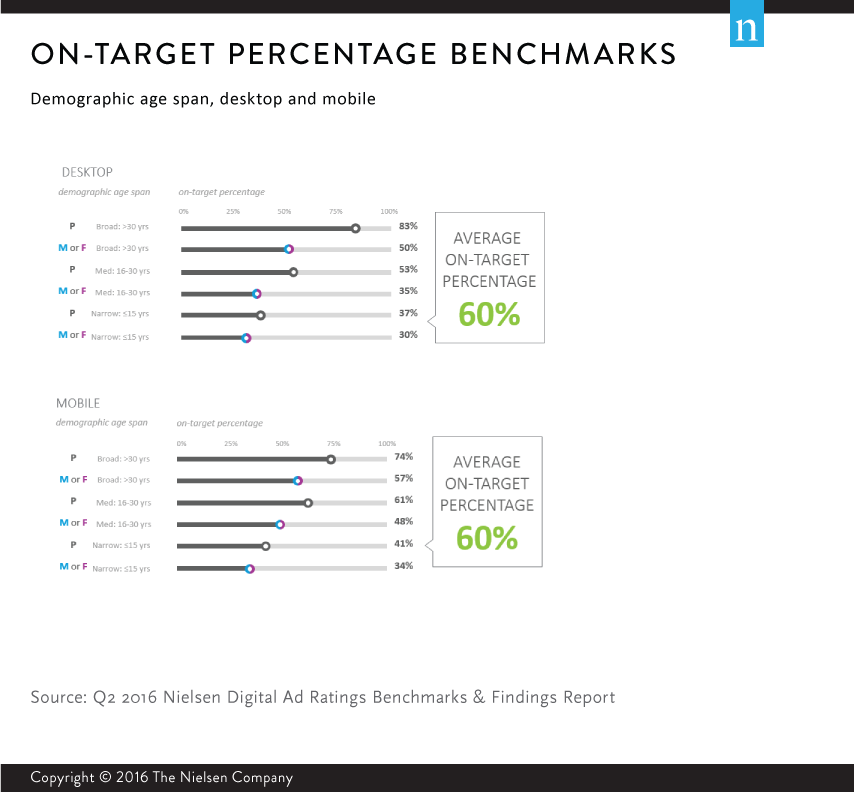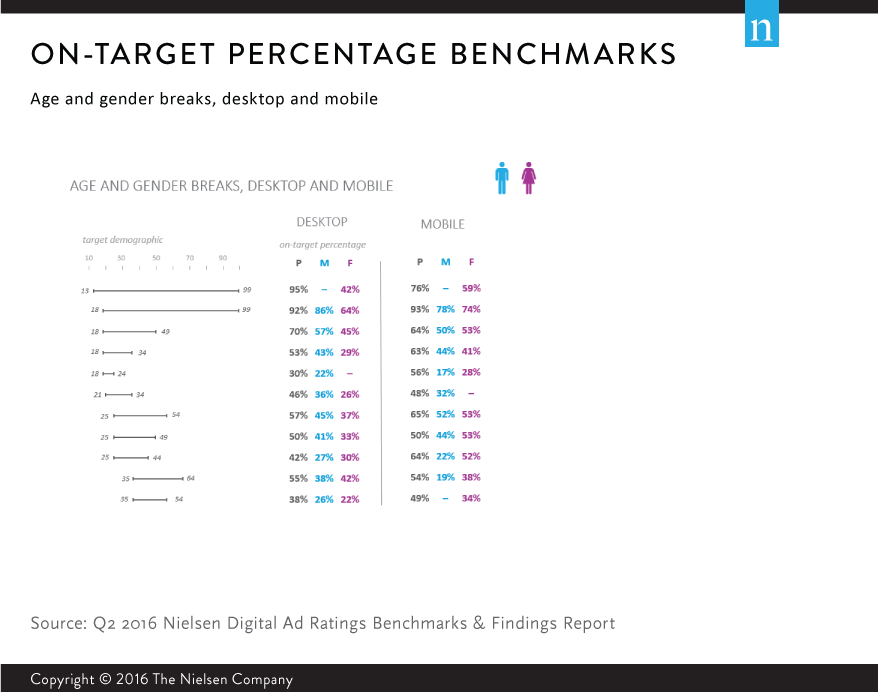With the rate of smartphone ownership in the U.S. continuing to climb, mobile has become a force to be reckoned within the world of digital advertising. While this boom is providing exciting opportunities for brands to reach many Americans, the mobile ad market’s rapid growth has raised questions as well, particularly around reaching the right consumers. To better understand how brands can overcome these challenges, the latest Nielsen Digital Ad Benchmarks and Findings report explored how successfully mobile ads in the U.S. are reaching their intended audience, as well as trends to watch in this space.
Demanding Attention With Breakout Performance
While desktop ads have historically had higher on-target percentages for reaching their intended audience than those on mobile, advertisers have made significant strides in closing the gap in recent years. The performance of mobile ad campaigns has improved significantly over the past year, with mobile ads reaching their intended audience 60% of the time as of second-quarter 2016 (up from 49% in the same period of 2015). This now puts the average on-target percentage for mobile campaigns on par with that of desktop campaigns—a factor that could influence considerations of media buyers and sellers planning digital media campaigns.
Creating Precise, Personal Connections
When looking to reach broader audiences, desktop continues to hold a slight advantage over mobile in campaign performance. In campaigns geared toward people aged 18-49—often thought of as a ’key’ buying demographic—mobile campaigns saw a lower on-target percentage compared with desktop campaigns, 64% versus 70%, respectively.
On the other hand, mobile campaigns were more effective in connecting with narrower audiences. This may speak to the fact that mobile devices are more personal in nature and less likely to be shared in the same way as viewing on other devices. In campaigns aimed at people aged 18-34, mobile ads performed higher than those on desktop—63% compared with 53%, respectively. Similarly, mobile campaigns intending to reach people aged 25-44 performed higher than desktop campaigns seeking the same audience, 64% compared with 42%.

These numbers further reinforce that mobile is proving itself to be a more highly personal platform and highlight the potential it holds for more precise connections.
Getting in Touch With Women
Generally, desktop campaigns have higher average on-target percentages with male audiences than with women. However, this trend is turned on its head when it comes to mobile ads.
In a marked contrast to desktop, mobile ad campaigns have greater success reaching women than men across most age brackets. Among people aged 18-49, mobile ad campaigns were able to reach 53% of women and 50% of men in the intended audience. By contrast, desktop campaigns intended for this group reached 57% of men and only reached 45% of women.
Notably, mobile’s ability to connect with women holds in more narrow audiences. Specifically, among people aged 18-24, mobile ad campaigns reached 28% of women in the intended audience compared with 17% of men in the same group. Given the importance of this segment to marketers and their reputation as pivotal early adopters, mobile’s strong connection with female consumers could hold tangible applications for brands across sectors.

Methodology
The second-quarter 2016 Nielsen Digital Ad Benchmarks and Findings report reflects the average on-target percentage for nearly 40,000 campaigns measured by Nielsen Digital Ad Ratings in the U.S. through the second quarter of 2016.


